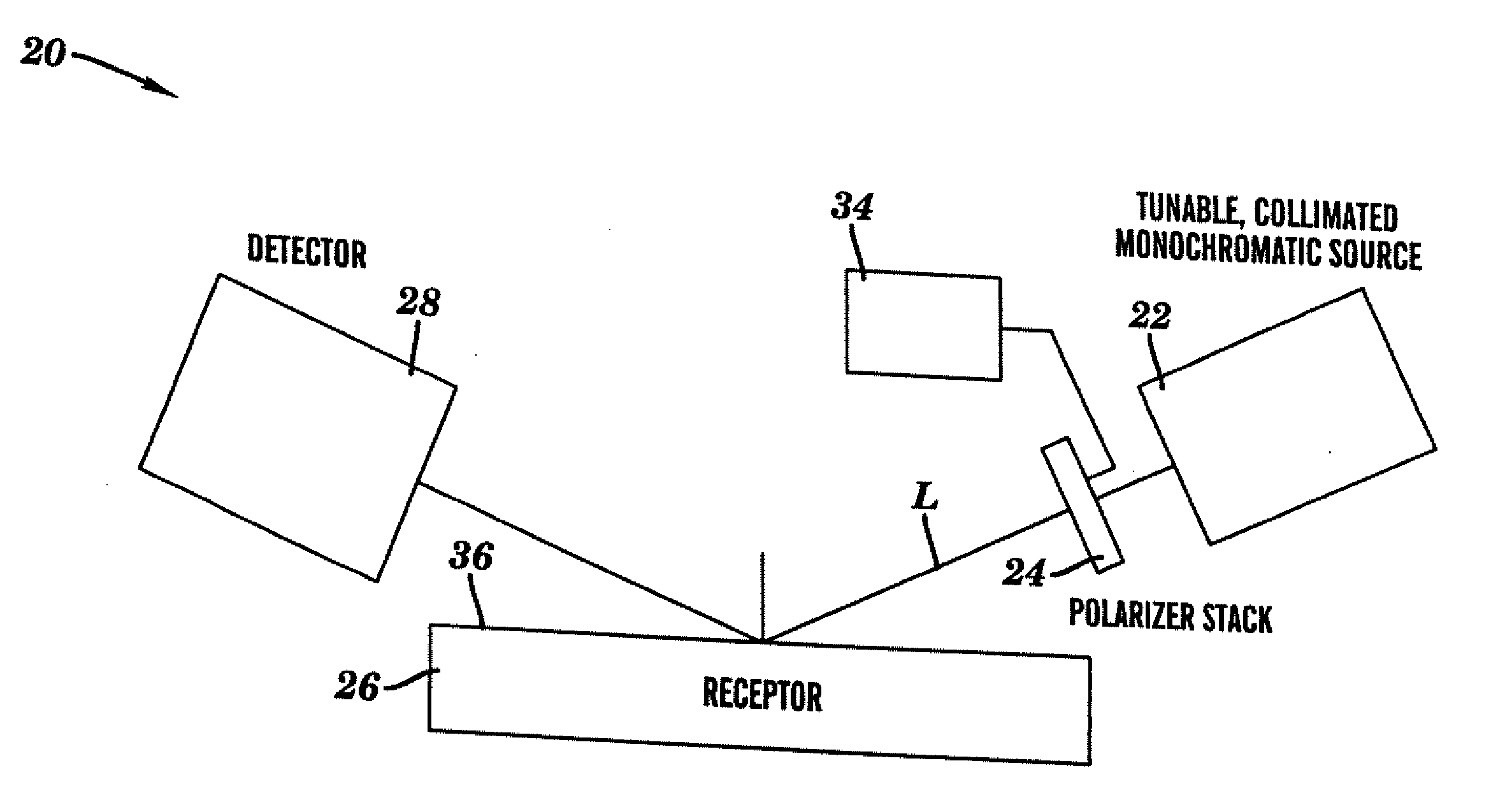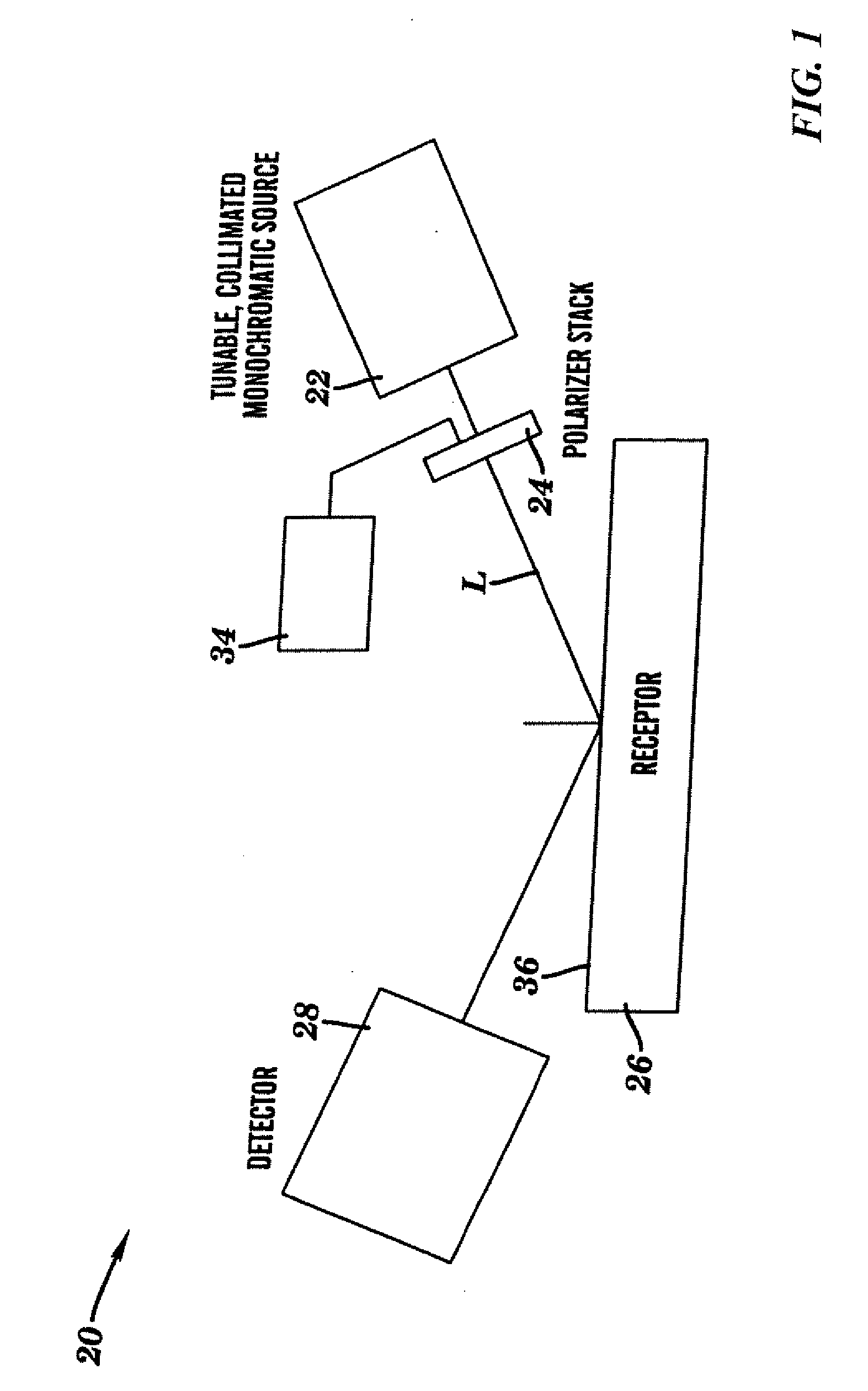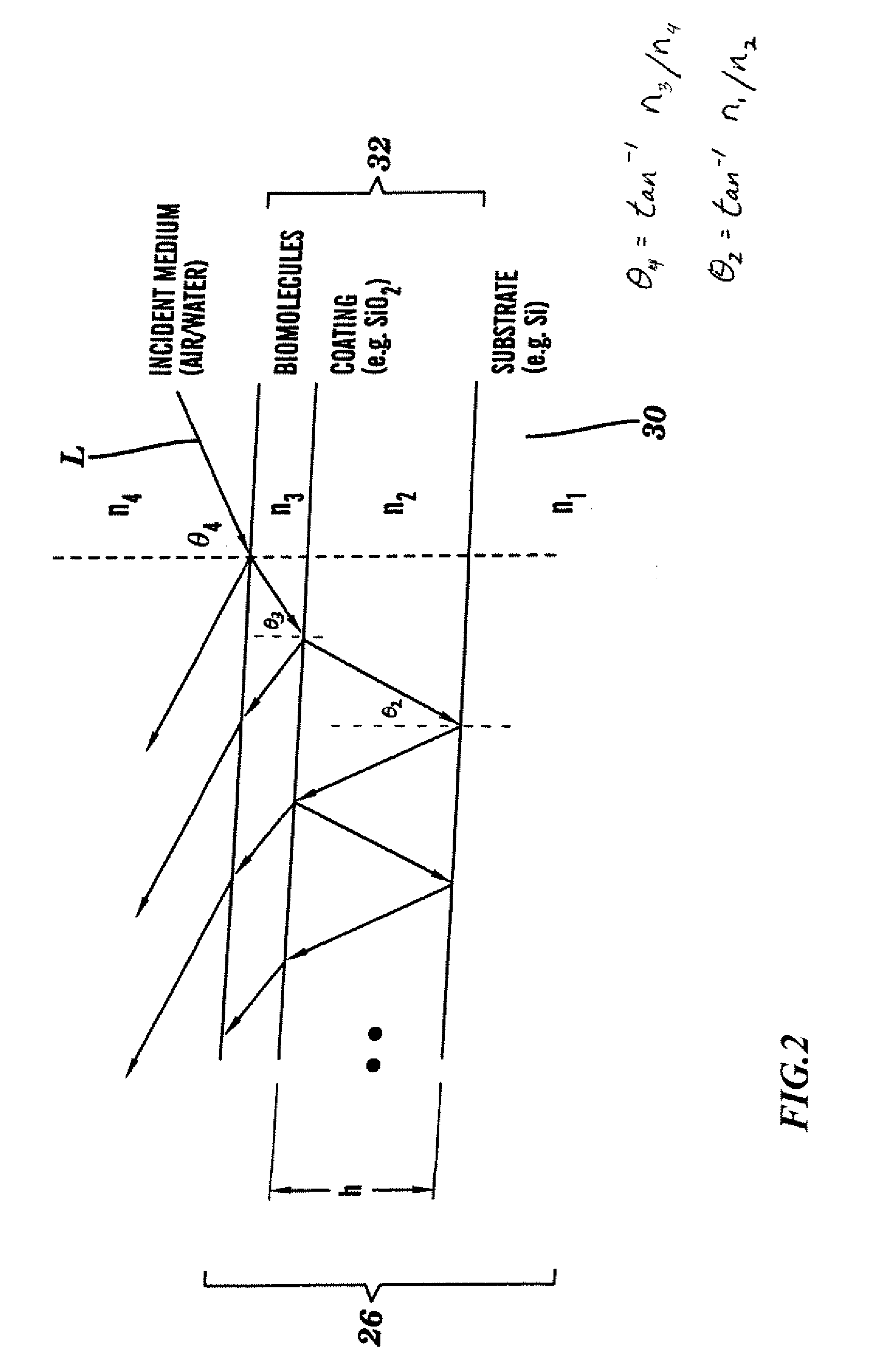System and method for brewster angle straddle interferometry
a technology of straddle interferometry and system, applied in the field of system and method for molecular sensing or detection, can solve the problems of time-consuming and cumbersome use, difficult scaling of radiation methodologies to arrays, associated safety and environmental problems, etc., and achieves greater angular tolerance, easy adaptation to arraying, and greater source divergence
- Summary
- Abstract
- Description
- Claims
- Application Information
AI Technical Summary
Benefits of technology
Problems solved by technology
Method used
Image
Examples
example 1
P-Polarized Reflective Interferometry Using Brewster Angle Flip
[0101] P-polarized RI has been reduced to practice both under air and under aqueous media by imaging reflection from adsorbate layers that have been independently measured with spectroscopic ellipsometry. P-polarized RI also has potential uses for sensing. The apparatus is essentially identical to that used in standard reflective interferometry except that the incident probe light is p-polarized, the incidence angle is as computed above and the substrate under test is a silicon wafer with only a ˜2.5 nm native oxide. For the data shown below, the probe source was a spatially filtered, collimated and apertured HeNe laser beam.
[0102]FIG. 12A shows a false color photograph of the reflection from a substrate using the intensity color code bar on the left. The composition of the substrate is sketched in FIG. 12B. The left of the FIG. 12B corresponds to PDMS stamped octadecylamine (ODA), the middle is bare native oxide and t...
example 2
Binding Chemistry
[0106] Any selective binding chemistry that can be implemented on the receptor can produce an adequate sensor. In one example, the receptor is rinsed and dried before imaging the surface topology of the coating. This is important to do to reduce any non-selective binding.
[0107] In this example, the surface is functionalized by silanization with 3-aminopropyltrimethoxysilane (“APTES”) followed by glutaraldehyde (“GA”) This in turn binds to streptavidin. This initial surface is relatively easy and rapid to prepare. The streptavidin surface is reasonably immune to non-specific binding and strongly binds biotinylated compounds. Since many biotinylated oligomers and antibodies are commercially available, this chemistry is easily implemented to make the receptor.
example 3
Arrayed Detection Of Target RNA Using 2-O-Methyl RNA Probes
[0108] Two 2-O-methyl RNA probes were assembled for detection of a 47-mer fragment of mutant Ha-ras mRNA, an important therapeutic target for antisense oligonucleotide treatments of cancer (Lima et al., Biochemistry 31:12055-12061 (1992), which is hereby incorporated by reference in its entirety). The probes, designated M3291 (strongly binding) and M3292 (very weak binding), have solution affinities as reported previously by Lima et al. (cited above). M3291 is complementary to the hairpin loop while M3291 is complementary to the stem and a small part of the hairpin loop. The latter is found to bind 107 times more slowly in solution than the former. The chip had immobilized 2O′-methyl RNA oligos and was organized as shown in FIG. 16A (lower left).
[0109] This array was mounted in an aqueous system of the type illustrated in FIG. 3, and used to detect binding of R47 RNA. Detection of changes in the reflectivity was carried us...
PUM
 Login to View More
Login to View More Abstract
Description
Claims
Application Information
 Login to View More
Login to View More - R&D
- Intellectual Property
- Life Sciences
- Materials
- Tech Scout
- Unparalleled Data Quality
- Higher Quality Content
- 60% Fewer Hallucinations
Browse by: Latest US Patents, China's latest patents, Technical Efficacy Thesaurus, Application Domain, Technology Topic, Popular Technical Reports.
© 2025 PatSnap. All rights reserved.Legal|Privacy policy|Modern Slavery Act Transparency Statement|Sitemap|About US| Contact US: help@patsnap.com



